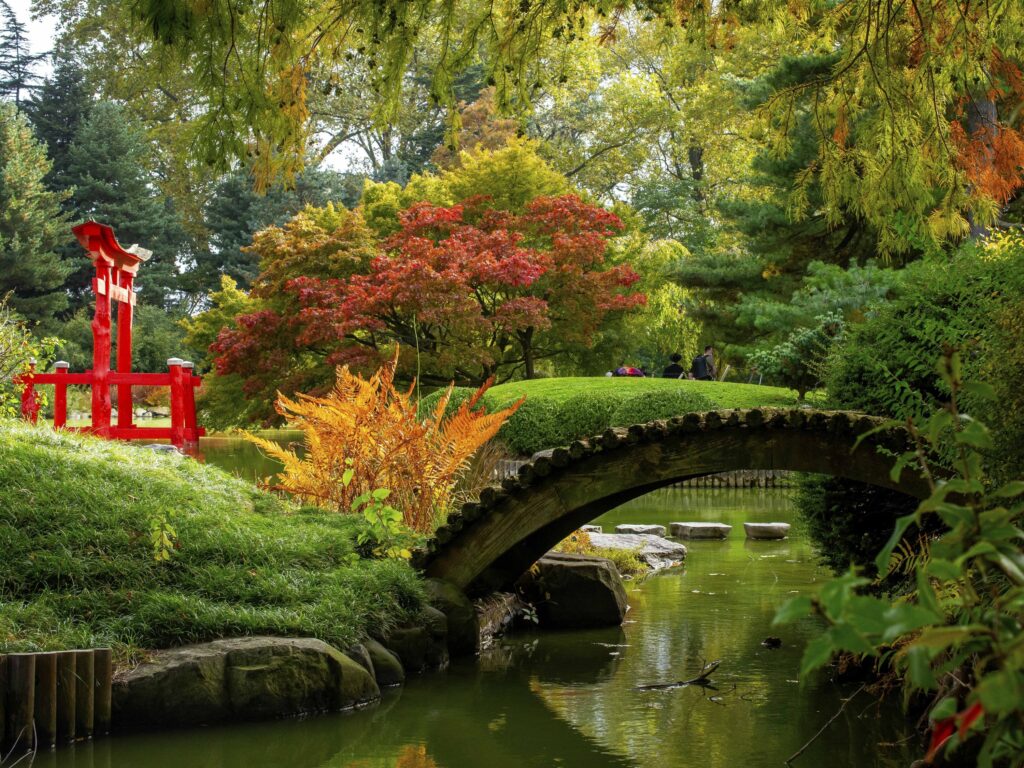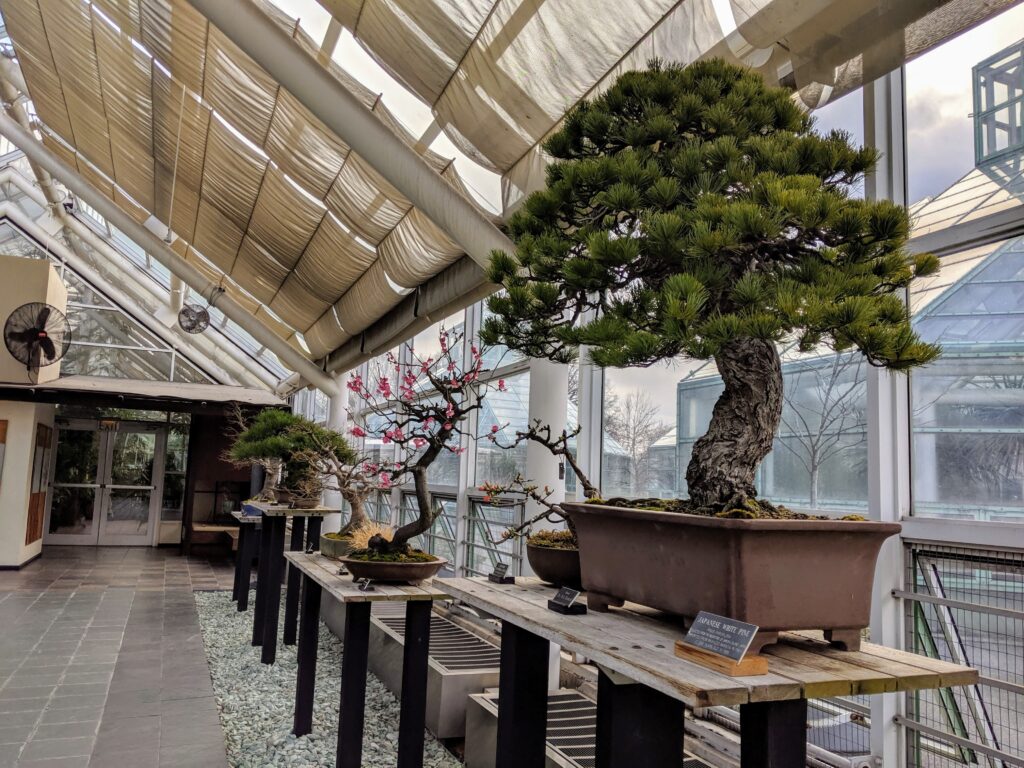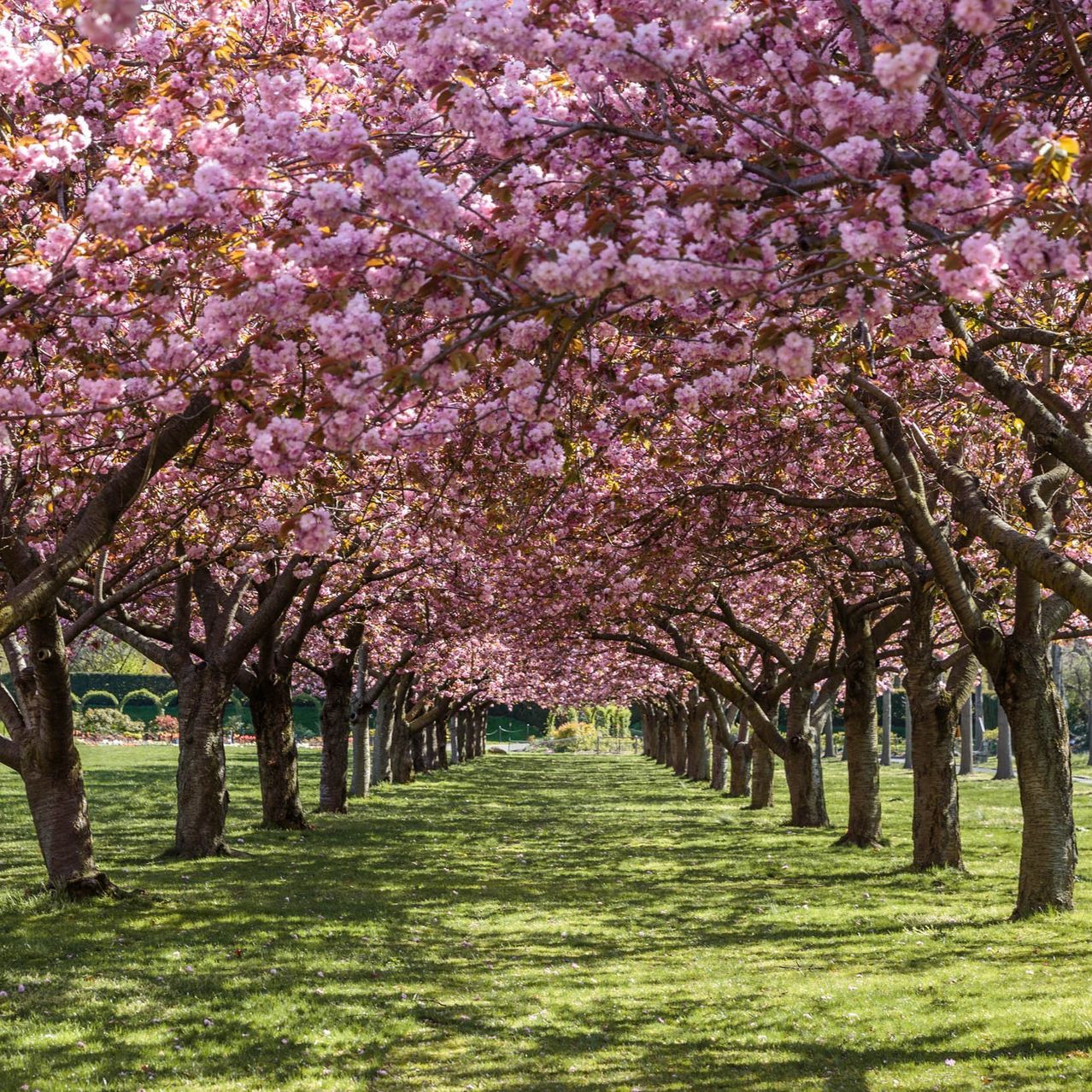The Brooklyn Botanic Garden stands as a testament to nature’s resilience and human ingenuity. Originally a marshy, glaciated 39-acre parcel acquired by the City of Brooklyn alongside land for nearby Prospect Park, this area remained largely untouched until the late 19th century. Over the years, it has evolved from a wild landscape into one of New York City’s most celebrated botanical havens, boasting a rich history and diverse collection of gardens. In recent years, the Garden has also gained recognition as a unique destination for cannabis travelers—a niche group seeking natural serenity, cultural exploration, and the therapeutic potentials associated with plant life. This article explores the Garden’s fascinating history and examines why it has become an appealing spot for cannabis enthusiasts and travelers.
Historical Development of Brooklyn Botanic Garden
Early Beginnings and Design
Purchased by Brooklyn along with adjacent Prospect Park land, the site’s landscape was shaped by the Wisconsin Iceberg—a massive glacial formation that, millions of years ago, carved the terrain into its distinctive knob-and-kettle topography. This geological history has left behind small ponds and hills, notably visible in areas like the Japanese Garden’s pond, which is nestled within a pool formed by the glacier’s retreat.
In 1897, legislation established Institute Park as an urban botanical garden aimed at educational purposes. The Olmsted Brothers, famous landscape architects, initially designed the site, envisioning a lush, accessible space for learning and recreation. However, the current 52-acre landscape owes much of its development to Harold Caparn, who served as the institute’s landscape architect from 1912 to 1945. Caparn envisioned the Garden as a collection of 13 eclectic gardens connected by winding paths, each with its own unique character and purpose.
Key Gardens and Developments
- Native Flora Garden (1911): The Garden’s first major project, showcasing plant species native to within 100 miles of New York City, fostering local biodiversity awareness.
- Children’s Garden: Reflecting the educational mission, this area offers horticultural programs for youths, encouraging early engagement with nature.
- Hill-and-Pond Garden (1915): Designed by Takeo Shiota, this Japanese-style garden was one of the first of its kind in an American public park, featuring a tranquil pond and traditional landscaping.
- Rock Garden (1917): Utilizing glacial boulders, this garden highlights the area’s geological history.
- Architectural Landmarks: The Beaux-Arts Administrative Building and glass-and-steel Palm House, designed by McKim, Mead and White, provide iconic architectural accents.
- 1920s Additions: The Lily Pool Terrace, Cherry Walk, and Shakespeare Garden (sponsored by Henry C. Folger) added diverse botanical and aesthetic appeal.
- Cranford Rose Garden (1928): Designed by Caparn, this garden boasts over 1,000 rose varieties, symbolizing horticultural excellence.
- Magnolia Plaza (1933): Celebrating the magnolia’s beauty and historical significance.
- WPA Contributions (1930s): The Herb Garden and the Italian Renaissance-style Osborne Garden, developed during the Great Depression, expanded the Garden’s diversity.
- Mid-20th Century Innovations: Alice Ireys created the tactile Fragrance Garden in 1955, emphasizing sensory interaction with plants.
- Recent Developments: Restoration projects and the addition of the Steinhardt Conservatory in the 1980s and 1990s continue to enhance the Garden’s offerings.

The Significance of the Garden’s Geological Heritage
The Garden’s terrain, shaped by the Wisconsin Iceberg, provides a unique landscape that features small ponds and hills—perfect settings for the Japanese Garden’s pond and other tranquil spaces. This glacial backstory adds a layer of natural wonder and educational value, attracting visitors interested in geology, botany, and landscape history.
Why Cannabis Travelers Visit Brooklyn Botanic Garden
Cannabis travelers—individuals who seek destinations that combine natural beauty, cultural richness, and opportunities for relaxation—are increasingly turning to places like the Brooklyn Botanic Garden. Several factors make this historic park appealing to this niche group:
- Natural Serenity and Therapeutic Environment
The Garden’s diverse gardens, tranquil ponds, and winding paths create an environment conducive to relaxation and mindfulness. For cannabis travelers, these settings offer an ideal backdrop for recreational or medicinal cannabis use, enhancing the sensory experience and fostering a sense of connection with nature.
- Botanical Diversity and Educational Appeal
With over 1,000 rose varieties, native plants, and specialized gardens like the Fragrance Garden, the Garden provides an immersive botanical experience. Cannabis travelers often appreciate botanical environments that highlight the diversity of plant life, especially as cannabis itself is a plant with rich cultural and medicinal significance.
- Cultural and Historical Significance
The Garden’s Japanese Garden, designed in 1915, and its historical architecture appeal to culturally curious visitors. Cannabis travelers often seek destinations that blend history, culture, and natural beauty—making the Brooklyn Botanic Garden a compelling choice.
- Location and Accessibility
Situated in the heart of Brooklyn, the Garden is easily accessible for urban explorers and tourists seeking a respite from city life. Its proximity to other cultural sites enhances its appeal as part of a broader travel experience.

Cannabis Travel and the Brooklyn Botanic Garden
While the Garden itself maintains strict policies regarding substance use on its grounds, the presence of a vibrant community of cannabis enthusiasts underscores a broader trend in cannabis travel. Travelers increasingly seek destinations that offer natural, scenic environments where they can enjoy cannabis responsibly—whether during private picnics in designated areas or in private accommodations nearby.
The Garden’s botanical richness and historical ambiance make it an attractive backdrop for cannabis-related photography, social media sharing, and relaxed gatherings—activities that are integral to modern cannabis tourism. Moreover, the Garden’s educational programs and emphasis on plant diversity resonate with the values of many cannabis travelers who appreciate the plant’s cultural history and potential benefits.
A Historic Landmark with Modern Appeal
The Brooklyn Botanic Garden has transformed from a glacial wasteland into a lush, educational, and cultural sanctuary. Its rich history, diverse gardens, and geological heritage make it a unique destination within New York City. For cannabis travelers, the Garden offers a serene and inspiring environment that complements their pursuit of natural beauty and cultural exploration. As the landscape of cannabis tourism continues to grow, historic sites like Brooklyn Botanic Garden will increasingly become integral parts of holistic travel experiences—celebrating nature, history, and personal well-being.
Why Beard Bros Travel Features Brooklyn Botanic Garden
At Beard Bros Travel, we believe cannabis culture is about more than consumption—it’s about connection, creativity, and exploration. Featuring destinations like Brooklyn Botanic Gardens shines a light on landscape highs and the visionaries who challenged conventions.
These spotlights invite our readers—especially cannabis enthusiasts with a passion for design, culture, and innovation—to think differently about travel. Whether you’re blazing new trails or just looking for places that spark conversation and wonder, the Brooklyn Botanic Gardens is a trip worth taking.
Interested in cannabis and travel, click here. Check out our cannabis travel listings here. Read more travel articles here.























